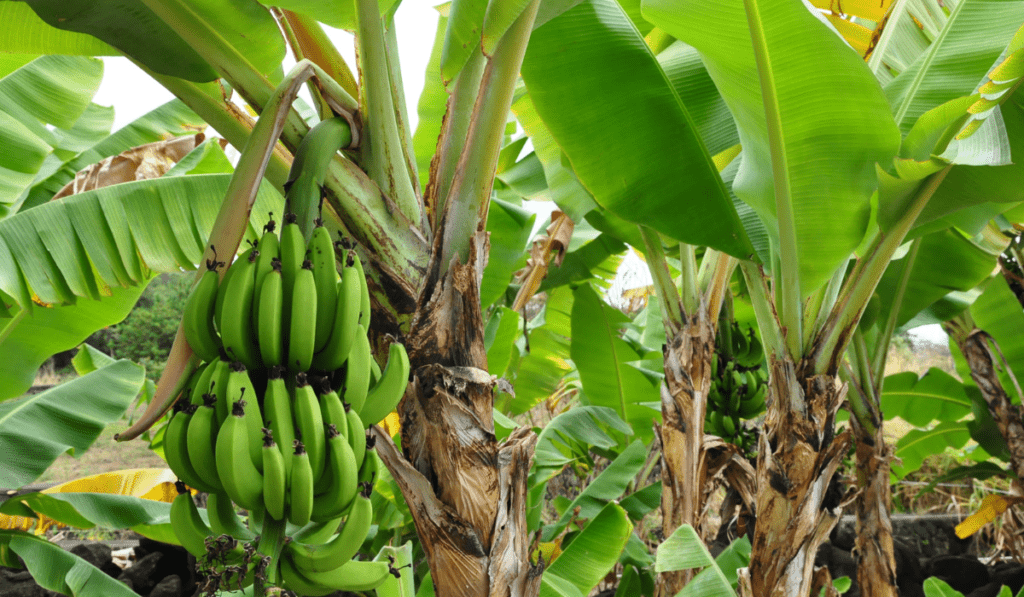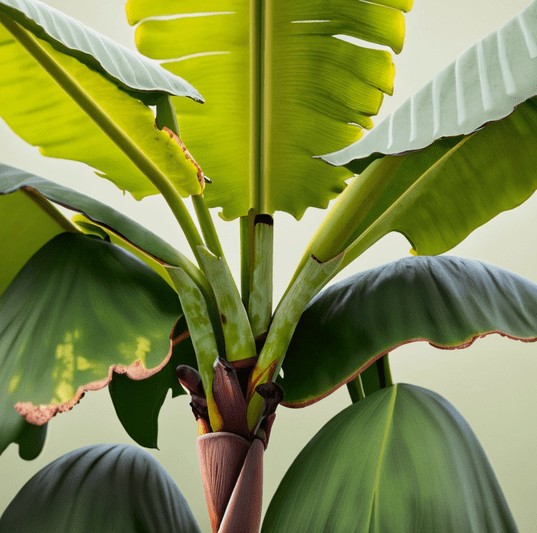No, Growing banana trees can be a rewarding experience, but their success largely depends on the right climate and care. Banana trees thrive in tropical and subtropical regions, and while they can be challenging to grow in colder climates, it’s not impossible. Let’s explore the factors that make banana tree cultivation relatively manageable in suitable conditions and the challenges faced in less-than-ideal environments.
Understanding Banana Trees: An Overview
Banana Tree Variety: There are several banana varieties, but the most commonly cultivated one is the Cavendish banana, known for its sweet and creamy fruit. Other varieties like plantains are also popular in various cuisines.
Growth Habit: Banana trees are technically not trees but large herbaceous plants. They can reach heights of up to 20 feet or more.
Tropical Origin: Bananas are native to tropical Southeast Asia and thrive in warm, humid climates. They require temperatures consistently above 50°F (10°C) for optimal growth.
Basic Requirements for Growing Banana Trees
Climate: The most critical factor for successful banana cultivation is climate. Banana trees need tropical or subtropical conditions with warm temperatures year-round. They are sensitive to frost and cannot tolerate extended periods of cold.
Soil and Location: Well-draining, fertile soil is ideal for banana trees. They prefer sunny locations sheltered from strong winds. Proper soil preparation is essential for healthy growth.
Water and Sunlight: Banana trees require regular watering to keep the soil consistently moist. They also need full sunlight for at least six hours a day. However, young banana plants should be protected from direct, scorching sun.
Planting and Initial Care
Planting: When planting banana trees, choose a healthy rhizome or a small plant from a nursery. Dig a hole and plant it at the same depth as it was in the pot, ensuring good soil contact around the roots.
Watering: Regular watering is crucial, especially during dry spells. Banana plants have shallow root systems, so maintaining consistent moisture is essential.
Mulching: Mulch around the base of the plant to conserve moisture, regulate soil temperature, and suppress weeds.
Maintenance and Challenges
Pruning: Regular pruning of dead or damaged leaves is necessary to encourage healthy growth and prevent disease.
Fertilization: Banana trees are heavy feeders and benefit from regular fertilization with a balanced fertilizer.
Pest and Disease Management: Common challenges include pests like banana aphids and diseases like Panama disease and Black Sigatoka. Integrated pest management and disease-resistant varieties can help address these issues.
Wind Protection: Banana plants have large, tender leaves that can be damaged by strong winds. Providing wind protection is important.
Harvesting and Enjoying the Fruit
Harvesting: Bananas are typically harvested when they are green and mature. They will ripen off the plant. Harvesting at the right time is important to avoid overripening or damage.
Culinary Uses: Bananas are incredibly versatile and can be enjoyed fresh, used in baking, blended into smoothies, or cooked in various dishes.
Conclusion
Growing banana trees can be relatively easy if you live in a tropical or subtropical climate. In these conditions, banana trees are resilient and can thrive with proper care. However, in colder regions, growing bananas can be a challenge, requiring protective measures such as overwintering indoors.
While banana cultivation demands attention to specific requirements, the reward of homegrown, fresh bananas and the lush, tropical ambiance they bring to your garden make it a worthwhile endeavor. If you live in the right climate, growing banana trees can be a delightful and fruitful experience.



